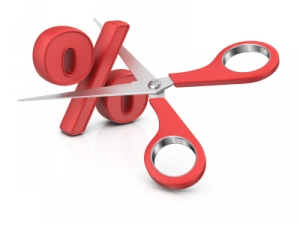Tuesday Jan 20, 2015
Low inflation fuels talk of a cut in the cash rate
Paul Bloxham, the HSBC economist who coined the phrase ‘rock star economy’ for New Zealand’s economic growth last year, is forecasting the country will remain one of the strongest performing developed economies in 2015.
Bloxham and colleague Daniel Smith released an economic report today that predicts the encore for the rock star will be gross domestic product growth slowing to 3 per cent this year from 3.3 per cent in 2014 which would see New Zealand continue to outperform most other developed nations. Growth is expected to be supported by a continued upswing in construction, buoyant consumer spending and a falling New Zealand dollar although soft dairy prices will prove a headwind and inflation is expected to stay low.
The HSBC report says while the overall value of growth in residential construction activity has begun to slow in Canterbury’s post-earthquake rebuilding, there is evidence the rebuild is about to shift from the residential repair phase to commercial rebuilding. There was a sharp lift in the value on non-residential consents being issued over the second half of last year, suggesting a number of large commercial projects and government-led initiatives are in the pipeline and should get underway soon.
A strong house building upswing underway in Auckland is supported by improved planning and land release processes along with low interest rates. New Zealand’s strong inward migration is supporting local demand for housing, the HSBC economists said.
Alongside construction, the dairy sector was another key driver of growth in 2014 but the outlook for this year remains more challenging. The GlobalDairyTrade index fell by 50 per cent between February and December last year leading to Fonterra lowering its forecast for the 2015 farmgate milk price to $4.70 kg/MS which could reduce dairy export earnings by around $7 billion in nominal terms and drag down rural incomes.
Bloxham and Smith say the main factor behind low dairy prices has been reduced demand from China, with New Zealand accounting for around 60 per cent of China’s dairy imports. But Chinese imports now appear to have dropped to seemingly unsustainably low levels and they expect Chinese imports to ramp up again this year as inventories diminish further, which should lead to a partial rebound in prices.
While inflation is expected remain low this year, the pair foresee underlying inflation to drift gradually higher this year towards the 2 per cent mid-point of the Reserve Bank’s target band. Bloxham and Smith remain upbeat about New Zealand’s medium-term prospects as rising middle class incomes in Asia drive demand for the country’s high-quality food, including beef, lamb and milk and tourism services.
The tight labour market is expected to continue to support consumer spending with employment gains having boosted overall household income despite slow wage growth. As the market tightens this year there should be a modest lift in wage growth, the economists say, and the migration boom that has driven population growth is expected to peak this year.
“For now, the New Zealand labour market is noticeably outperforming that of Australia, which is the main source of migrants, although the gap may narrow over time as several indicators point to a gradual improvement in hiring conditions in Australia,” Bloxham and Smith said.
Falling oil prices are also helping boost household incomes this year. On average, petrol makes up about 5 per cent of household spending, so the 20 per cent fall in petrol prices that has occurred so far, due to recent falls in oil prices, could boost growth in household disposable income by around 1 percentage point, they said.

